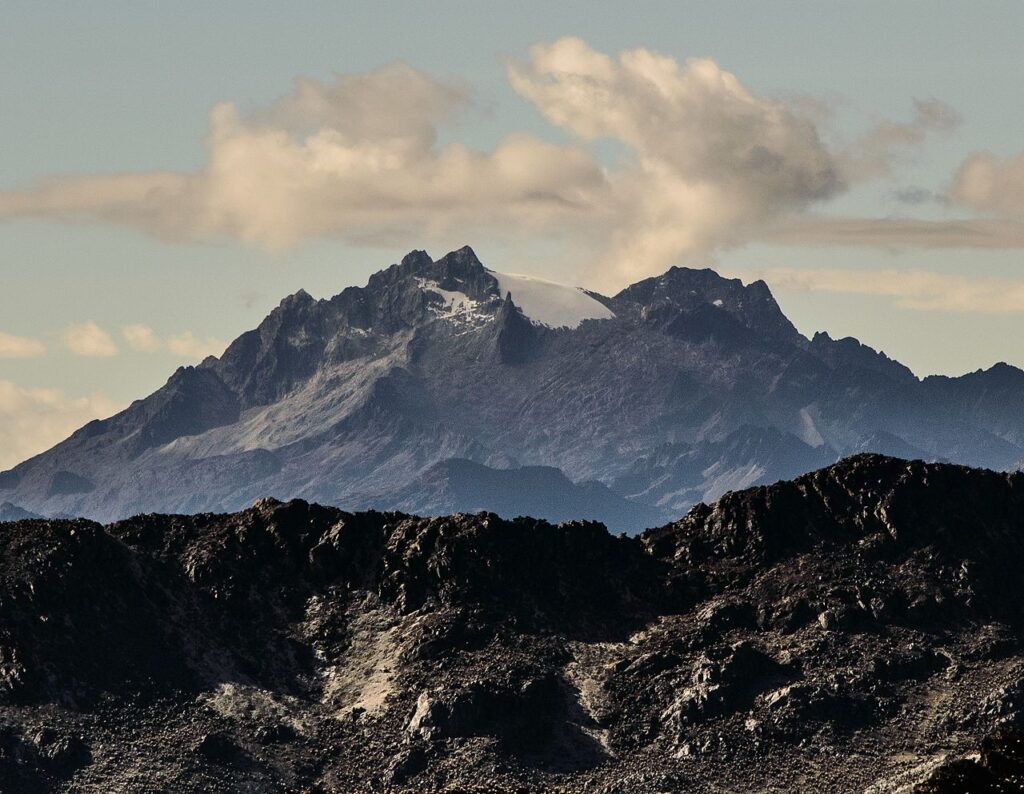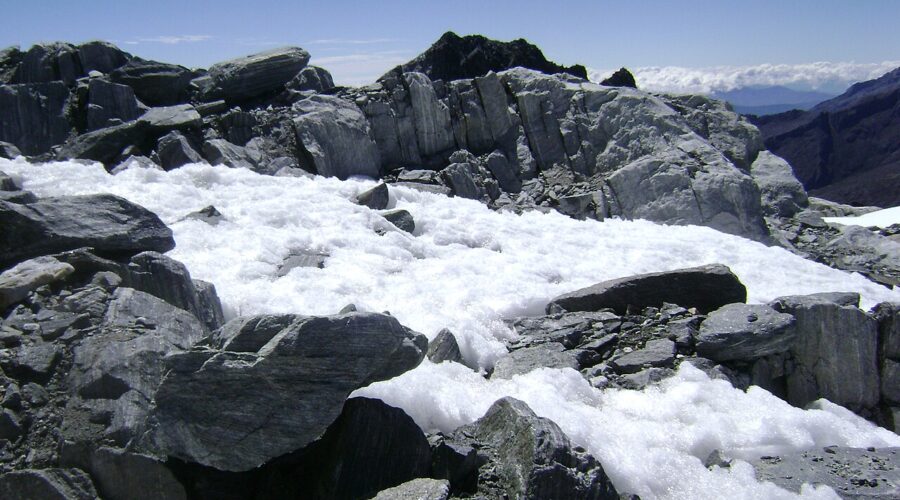Climate change contributed to the accelerated decline. In May, scientists reclassified Humboldt Peak, also known as La Corona, now considered only an icefield, making Venezuela the first post-glacial nation in the Andes. The International Cryospheric Climate Initiative (ICCI), which monitors the world’s ice zones, said the icefield was too small to be classified as a glacier.
#Venezuela has officially lost its last glacier after La Corona glacier on Humboldt peak, 4,900 meters above sea level, became too small to be classed as a #glacier.
This makes Venezuela the first country in the Andes mountain range to lose all its glaciers. https://t.co/BJyqouUjMY
— International Cryosphere Climate Initiative (@ICCInet) May 6, 2024
The melting was faster than expected. The Humboldt peak, with a height of 4,942 meters above sea level, had a registered extension of 4.5 square kilometers, however, by 2015, scientists had calculated an extension of 0.1 square kilometers (10 hectares) and today it barely reaches 0.02. Alarming figures show that from 1952 to 2019, Venezuela lost more than 90% of its glaciers.
Between 1971 and 1992 alone, according to studies and publications by Venezuelan geology expert Carlos Schubert, a large part of the perpetual snow disappeared. The last to die, before the Humboldt, were the Concha and Bolívar Peak.
The death of the Humboldt glacier occurred a decade before predictions suggested it would. However, the area could not have much monitoring due to the convulsive political situation in Venezuela. The recent observation revealed that only a small portion of ice remains, representing 1% of the surface that covered the entire area in the past.
Although ice retreat was visible in the 1970s, acceleration has increased since 1998, with higher peaks (17% per year) since 2016. The longevity of the Humboldt Glacier is likely due to topography, which with steep slopes clung to a softer slope where snow compacted and settled to form glacial ice.
The altitude of the Humboldt, only below Bolívar Peak in Venezuela, also contributed to the glacier’s lifespan. But these tropical glaciers, close to the equator, are susceptible to climatic variations, since they depend on the snowy and cold weather at high altitudes for the accumulation and preservation of ice, and are smaller than polar glaciers.

Most of the Earth’s tropical glaciers are found in the Andes of Ecuador, Colombia, Peru and Bolivia. Scientists estimate that global warming will contribute to the disappearance of glaciers in Colombia and Ecuador by 2050. Later, those of Peru and Bolivia will follow. For example, Colombia currently has six glaciers with a total area of 33 square kilometers. The snow-capped volcano of Santa Isabel is the smallest with only 20 hectares, reason why scientists estimate that it will disappear in the next seven years.
This makes the Humboldt a mirror of what will happen in other areas of the world and, if the relevant studies are carried out, it could provide some answers about the high mountain ecosystems and the changes produced by climate change. In addition, we can see how the ecosystems that depend on them and the communities associated with these ice bodies — from microbial habitats to local water supplies — are affected.
The reactions of glaciers are similar in different regions. Beyond South America, the countries that will run out of glaciers, according to scientists, will be Slovenia, Mexico and Indonesia. Some glaciologists even estimate that by 2100 the planet will lose between 20% and 80% of its glaciers, depending on how effectively we reduce CO2 emissions.
Coincidentally, Humboldt Peak is named after one of the founders of ecology, Alexander von Humboldt, a scientist who exposed the link between human activity and its effects, and explored Latin America extensively, including many cities in Venezuela. In his first sighting of Venezuela in 1799, he observed how the plantations of the Spanish colony had impacted negatively, causing deforestation, a thought contrary to that of the time, when people believed they could take everything from nature and have dominion over it to gain profits. Even Simón Bolívar used to say about Humboldt that he was the scientific discoverer of the new world.
Images: Glaciar Pico Humboldt in 2013 by Hendrick Sanchez and in 2014 by Adolfo

